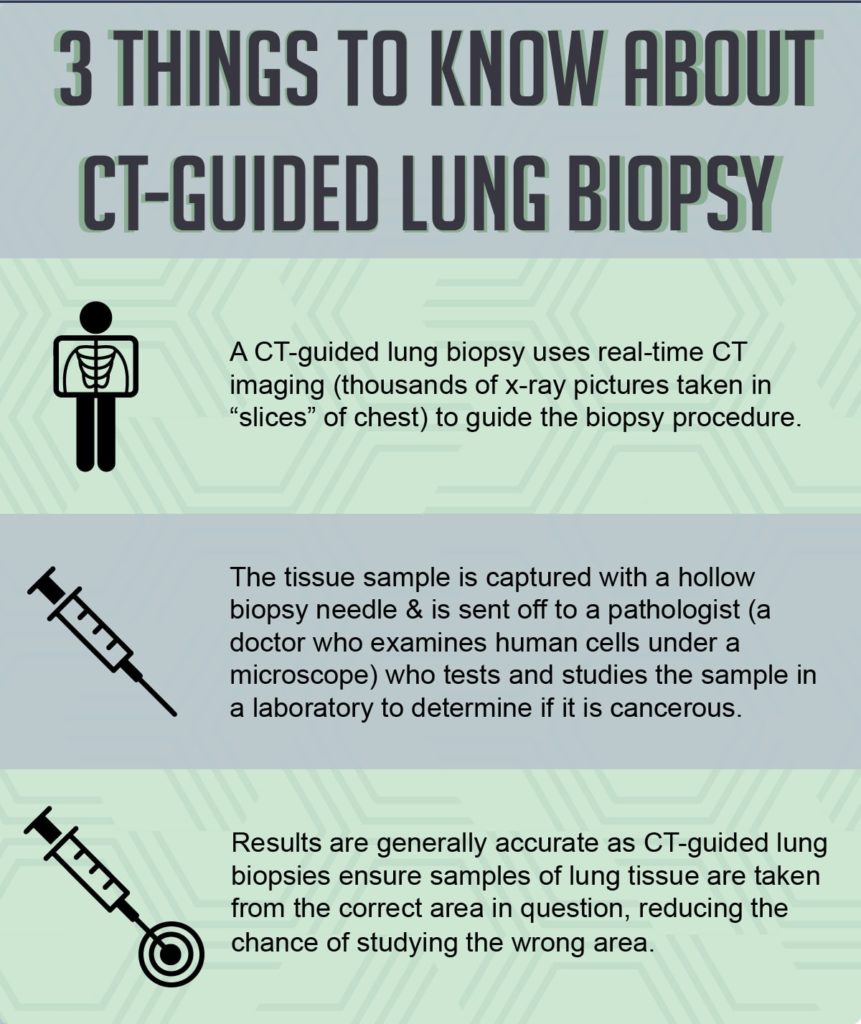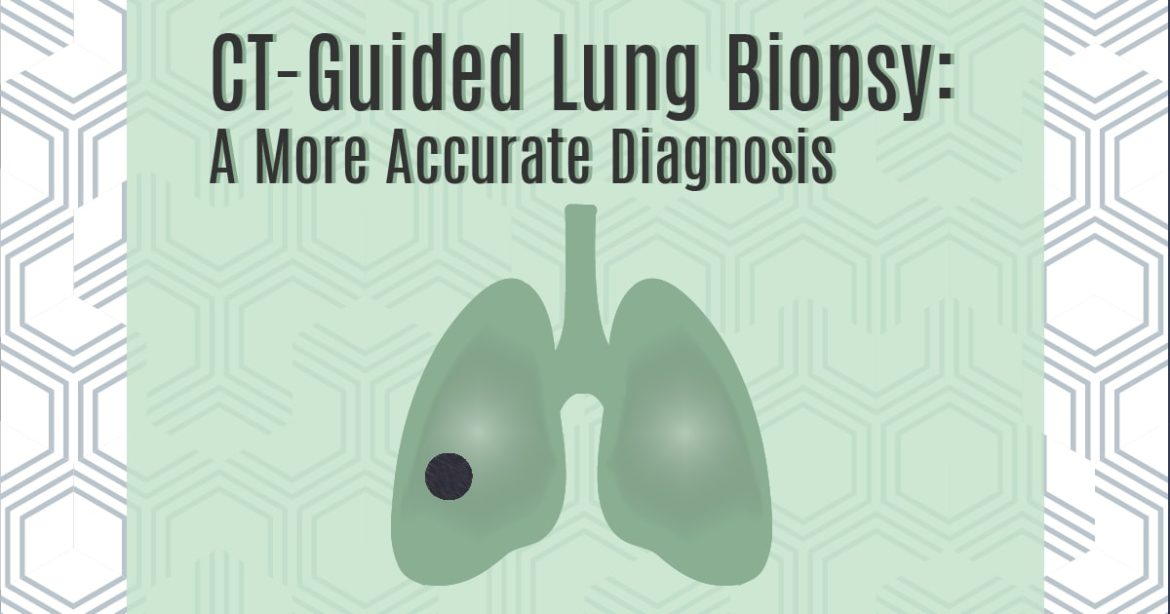Lung nodules are small masses of tissue found in the lung. Most lung nodules are found to be non-cancerous. But how does a doctor determine whether or not they are cancerous? The best method is through a biopsy— a tissue sample removed from the body to be tested for the presence of cancer in a laboratory.
At UVA Radiology, we provide CT-Guided Lung Biopsies that allow doctors to take tissue samples of lung nodules using real-time imaging guidance. By making sure they are sampling from the correct area, radiologists provide the first step to an accurate diagnosis.
Why Use CT-Guidance?
Lung nodules are typically about .2 to 1.2 inches in size. While lung nodules are fairly common, the good news is that most are benign. Many lung nodules are the result of inflammation of the lung due to lung infection or disease. The larger and more spiculated (having spikes or points on the surface) a lung nodule is, the more likely it is to be cancerous.
Lung nodules do not generally present noticeable symptoms. In fact, they are usually found incidentally when a chest x-ray or CT scan is taken for an unrelated reason. Radiologists first detect lung nodules when they notice a round, white abnormal area or shadow on an image of the lungs. Radiologists may compare images from past x-rays or CT scans (if available) to see if the nodule has changed in shape or size.
The last step in determining whether or not a lung nodule is cancerous is taking a biopsy. A biopsy is a sample of tissue that is removed from an area (in this case, the lung nodule) for further study in a laboratory. A CT-guided lung biopsy ensures that the samples of lung tissue are taken from the accurate location, reducing the chance of studying the incorrect area.
How Do CT-Guided Lung Biopsies Work?
Before a CT-guided lung biopsy is performed, you should have a discussion with your doctor about your medical history, allergies, and any medications you are taking. Your doctor will explain the procedure and cover any specific instructions you need to follow before the procedure. This may include avoiding eating or drinking for up to 8 hours before the biopsy. Sedation or relaxation medication may also be given to you intravenously.
A CT-guided lung biopsy uses real-time CT imaging (thousands of x-ray pictures taken in “slices” of chest) to guide the biopsy procedure. A CT scanner looks like a ring or even a doughnut. The patient will lie on an exam table and this machine will rotate around them, taking x-ray images.
Using the images provided by the CT scanner, your radiologist will insert a biopsy needle directly into the lung nodule through the skin. The biopsy needle is a hollow needle that is just a few inches long, and is able to capture and extract the tissue sample.

After the Biopsy
After the procedure, you may experience mild soreness at the site of the biopsy. This soreness usually fades over the next 12 to 48 hours, and you can resume your normal activities.
Once the tissue sample is obtained, it is sent off to a pathologist (a doctor who examines human cells under a microscope) who tests and studies the sample in a laboratory to determine if it is cancerous. They will discuss the findings with your doctor, and your doctor will follow up with you to let you know the results. If possible, try to avoid worrying about the biopsy results. As previously stated, most lung nodules are non-cancerous and nothing is certain until the sample has been tested.
CT-guided lung biopsy results are typically accurate as the imaging allows doctors to target the precise area in question, minimizing the chance of studying the wrong area. If you need a lung biopsy, consult with your care provider about having a CT-guided lung biopsy. To learn more about the imaging specialties or procedures performed by the highly skilled radiologists at UVA, click here.



